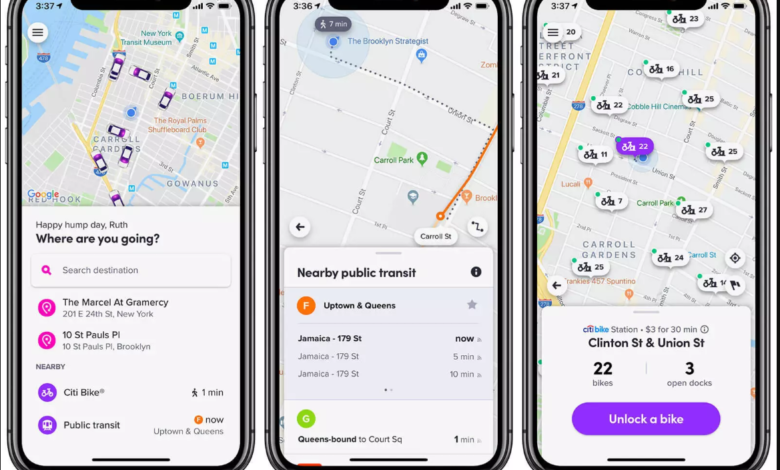
The ride-sharing industry has revolutionized urban transportation, offering convenient and affordable on-demand rides. With a smartphone in hand, users can connect with drivers and reach their destinations quickly and efficiently. But what lies behind the user-friendly interface of these popular apps? What does it take to design a successful ride-sharing app that caters to both riders and drivers? Let’s delve into the key elements involved in designing a ride-sharing app:
1. Understanding User Needs:
Before embarking on the design process, conducting thorough user research is crucial. This involves understanding the needs, expectations, and pain points of both riders and drivers. Here are some key areas to consider when looking to create a taxi app like Uber:
For Riders:
-
- Convenience and Efficiency: Users prioritize prompt service, real-time tracking, and multiple ride options (e.g., budget, comfort, carpool).
- Safety and Security: Secure payment methods, driver verification, and in-app emergency features are essential for user safety.
- Affordability and Transparency: Clear pricing structures, fare estimations, and upfront cost displays facilitate informed decisions.
For Drivers:
-
- Maximizing Earnings: Efficient trip allocation, clear navigation, and fair compensation models are crucial for driver satisfaction.
- Safety and Security: Driver verification, in-app reporting features, and emergency assistance options ensure a safe working environment.
- User Communication: Clear in-app messaging tools facilitate seamless communication between drivers and riders.
2. Designing the User Interface (UI):
The UI plays a critical role in user experience. Here are some key design principles to follow:
- Simplicity and intuitiveness: The app’s interface should be clean, uncluttered, and easy to navigate for users of all technical abilities.
- Clarity and consistency: Use consistent visual elements, clear fonts, and intuitive icons to ensure users understand the app’s functionalities instantly.
- Accessibility: Design the app with accessibility in mind, catering to users with visual impairments or other disabilities.
3. Key Features for a Successful Ride-Sharing App:
- Real-time location tracking: Allow users to track their driver’s location in real-time to ensure transparency and provide peace of mind.
- Multiple ride options: Offer different ride options (e.g., budget, luxury, carpool) to cater to diverse user needs and budgets.
- Fare estimation: Provide users with upfront estimates or fixed fares for their rides, allowing them to make informed choices.
- Secure payment integration: Integrate secure and convenient payment methods like credit cards, digital wallets, and in-app payment options.
- In-app messaging: Facilitate communication between riders and drivers through secure in-app chat functionalities.
- Driver and rider ratings and reviews: Implement a rating system for both riders and drivers to promote accountability and a positive user experience.
- In-app navigation: Include a robust navigation system that guides drivers efficiently and accurately to their riders’ destinations.
- Safety features: Integrate safety features like emergency buttons, in-app reporting tools, and driver verification processes.
- Push notifications: Utilize push notifications to keep users informed about ride confirmation, arrival updates, and relevant app updates.
4. Designing for Different Platforms:
It’s crucial to ensure a consistent and seamless user experience across different platforms, including iOS and Android. This involves:
- Platform-specific design guidelines: Adhering to the design guidelines of each platform (e.g., Material Design for Android, Human Interface Guidelines for iOS) ensures a familiar and intuitive experience for users on their respective devices.
- Responsive design: Implement responsive design principles to ensure the app adapts seamlessly to different screen sizes and resolutions.
5. Testing and Refinement:
Rigorous testing is crucial before launching your app to the public. This involves:
- Usability testing: Observe and analyze how real users interact with the app, identifying any usability issues or areas for improvement.
- Functional testing: Ensure all functionalities of the app, from booking rides to processing payments, work flawlessly across different devices and platforms.
- Security testing: Conduct thorough security audits to identify and address any potential vulnerabilities in the app’s security architecture.
6. App Analytics and Improvement:
Data is your friend! Continuously monitor your app’s performance and user behavior through analytics tools. This data can help you identify areas for improvement, such as:
- Optimizing user flows: Identify areas where users encounter difficulties or delays and streamline the overall ride-booking process.
- Personalizing the experience: Use user data to personalize the app experience, suggesting preferred ride options or highlighting routes based on past user behavior.
- Addressing user feedback: Actively listen to user feedback and suggestions, and continuously iterate and improve
Conclusion
In conclusion, designing a successful ride-sharing app requires a user-centric approach, prioritizing both user needs and intuitive design. By implementing the key features, adhering to platform specificities, and continuously iterating based on data and feedback, you can create a ride-sharing app that offers a seamless, efficient, and ultimately delightful experience for both riders and drivers.



